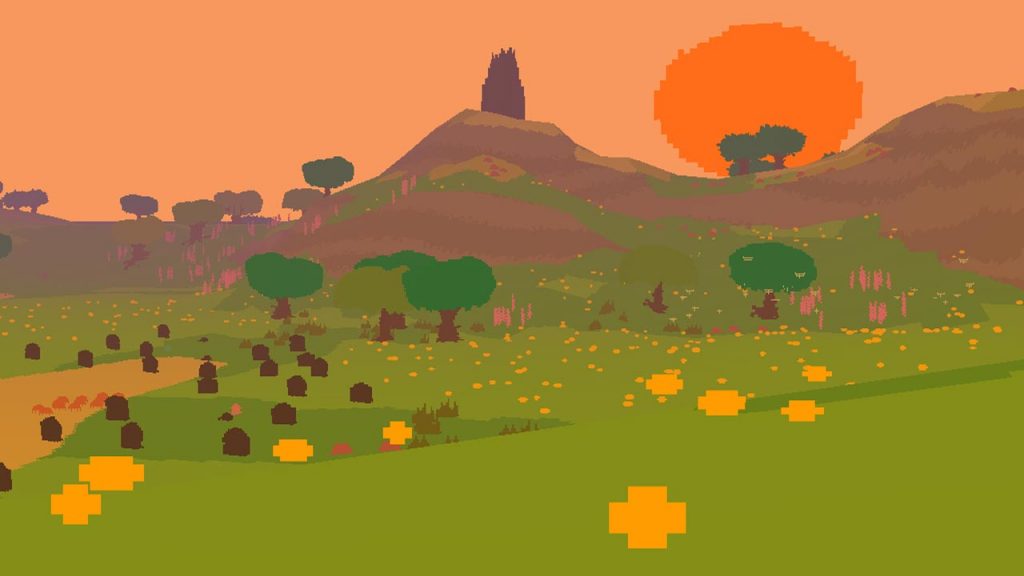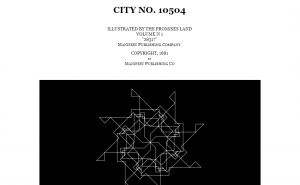
Proteus is a video game developed by Ed Key, released in 2013. Players can wander around a colorful, pixelated, procedurally-generated island filled with plants, strange animals, and the occasional remnant of civilization. The game’s soundtrack, composed by David Kanaga, also changes depending on the time of day and where the player is standing. I couldn’t find too much about the algorithms behind the game, but from playing the game there’s a certain amount of features (such as plants, animals, or structures) that can be randomly generated around the island, depending on the island’s “season.” The island’s topography and weather also are randomly generated. All this works together to create a strange, peaceful space that’s different every time the player visits it.
Even though there’s not much gameplay in the “traditional” sense–all you can do is walk around, listen to music, and take screenshots of the places you encounter–and what gameplay there is is fairly limited, Proteus has a vague, dream-like feel to it that I really enjoy. I also admire the way Key has created a world with a specific feel to it, despite or perhaps working along with the purposefully low-resolution graphics.
Proteus by Ed Key and David Kanaga
![[OLD FALL 2017] 15-104 • Introduction to Computing for Creative Practice](../../../../wp-content/uploads/2020/08/stop-banner.png)
